Rehabilitation is hard. It takes time, patience, and a whole lot of courage. Every day feels like a mountain to climb—especially when you’re recovering from limb loss or injury. But what if we could make it feel more like a game? What if rehab became something you wanted to do, not something you had to?
That’s where we come in.
At RoboBionics, we believe healing doesn’t have to be boring. It doesn’t have to feel like a chore. It can be exciting. Motivating. Even fun. And we’re not talking about just adding a bit of music or making things colorful. We mean real change. A rehab experience that feels like unlocking a new level every day. One where progress feels like power-ups and setbacks are just part of the challenge.
Because when rehab feels like a game, people don’t give up. They show up. Again and again.
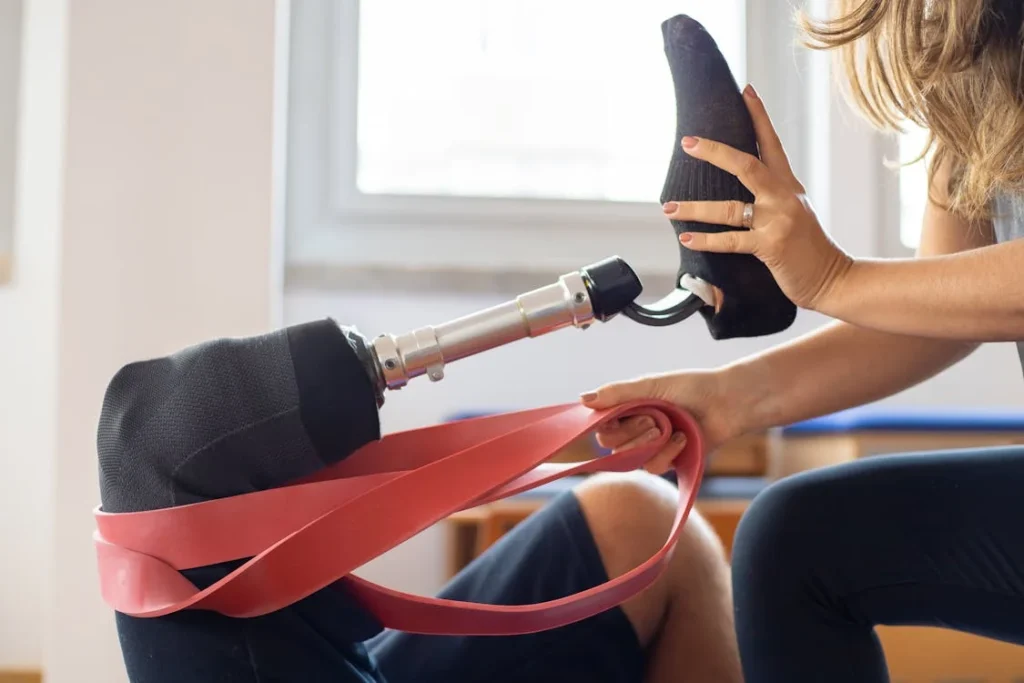
Why Traditional Rehab Feels So Hard
Rehabilitation is often described as a journey. But for many, it doesn’t feel like a journey—it feels like being stuck in the same place, doing the same thing, every single day. You go to the clinic. You sit through your exercises. You try to move a little more than yesterday. But everything hurts. Everything is slow. And nothing really feels different after one session. This can make even the strongest person feel tired, frustrated, and discouraged.
The hardest part about rehab isn’t the pain or the physical struggle. It’s the mental part. The part where your brain starts to wonder, “Is this even working?” That little voice that whispers, “Why bother today?” When rehab is dull, that voice grows louder. And soon, people stop showing up. Or if they do, they go through the motions without really trying.
That’s what we wanted to change.
Where Motivation Meets Movement
We’ve learned something powerful over the years: people don’t need more pressure—they need more play. They don’t need to be pushed harder. They need to be pulled into something they enjoy.
That’s what gaming does so well. Games make people want to try again, even after failing. Games make people excited about small wins. They reward effort, not just results. And most importantly, they make people feel good about trying.
So we asked ourselves—why can’t rehab be like that too?
What if each exercise felt like a mini challenge? What if every time you improved your grip, you saw your progress on screen? What if your hand’s movements became part of a game where you control a character, solve puzzles, or chase a goal? What if therapy didn’t feel like therapy at all—but felt like play?
That’s exactly what we’re building with our Gamified Rehabilitation App.
Rehab That Feels Like Leveling Up
The idea is simple, but powerful. Imagine holding a small ball and squeezing it. In traditional rehab, that’s just exercise. In our gamified system, that same movement controls a balloon on a screen. Every time you squeeze, the balloon lifts. The stronger your grip, the higher it goes. Suddenly, you’re not just squeezing a ball—you’re flying.
Your hand movements can be tracked in real time. The system watches how strong your grip is, how fast your fingers move, and how often you practice. And then it turns that data into a game. You can see how you’re doing today compared to yesterday. You get feedback instantly. You get rewards when you hit a new milestone. You feel proud because now you can see your progress—not just hope for it.
We’re using this to help people who use the Grippy™ Bionic Hand, but also anyone going through hand and finger rehab. Whether you’re recovering from surgery, injury, or learning to use a prosthetic, this app is made for you.
The Brain Loves Games. And That’s a Good Thing.
There’s a reason games are addictive. They light up the brain in a very special way. Every time you win a level or reach a goal, your brain releases dopamine—that feel-good chemical that makes you smile and keeps you coming back for more.
This is the same reaction we want during rehab. Because when your brain is happy, your body tries harder. You move more. You remember better. You start to want to get better—not just for your body, but for your mind.
It’s not just about fun. It’s about science.
Gamified rehab boosts focus. It reduces stress. It improves learning. And most importantly, it creates a loop of positive feedback. You try, you improve, you feel good—and then you try again.
Designed for Real People, Not Just Patients
Many rehab tools are made for hospitals. They’re cold. Complex. Full of charts and numbers that only a doctor understands. That’s not how we work at RoboBionics. Everything we make is for real people with real lives.
That means easy-to-use apps. Simple design. Clear instructions. And most of all—joy.
We test every feature with real users. People like you. People learning to use a prosthetic for the first time. People rebuilding strength after surgery. People who want to live life fully again.
We don’t guess what works. We listen. We learn. And we build based on what you need.
So when we say this app makes rehab feel like a game, we mean it’s built around you—your life, your routine, your progress.
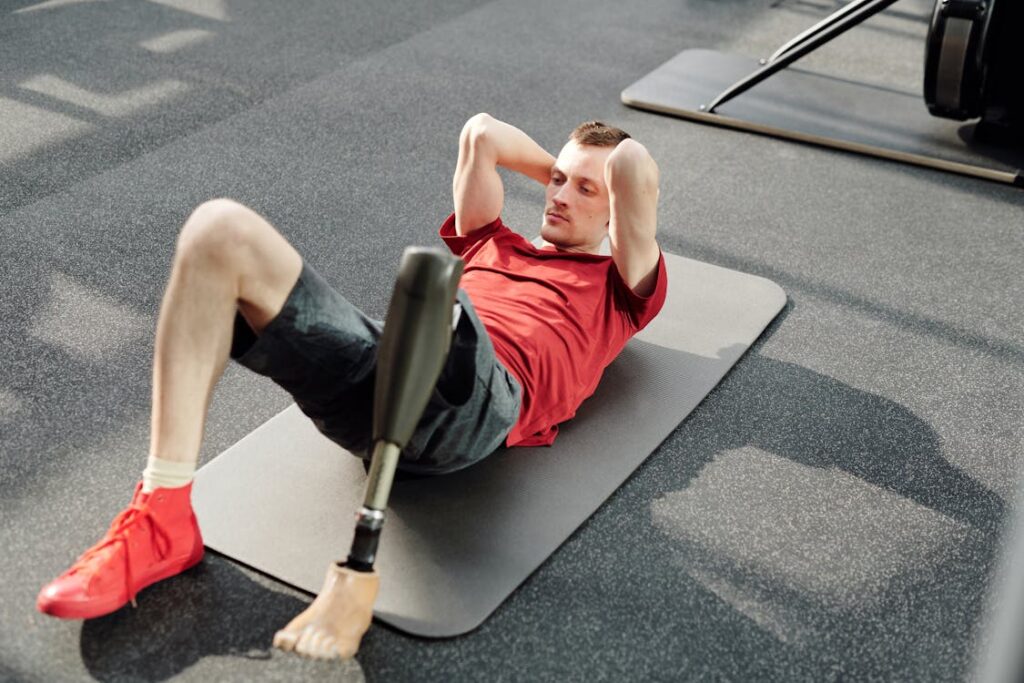
Everyday Progress, One Game at a Time
Progress in rehab often feels invisible. You go from one session to the next, hoping something has changed. But with gamified rehab, every bit of progress is seen and celebrated. That tiny increase in grip strength? The app shows it. That extra second of hand control? It counts. Instead of waiting for a doctor to tell you you’ve improved, you see it for yourself.
This kind of immediate feedback can be life-changing. It keeps you motivated. It builds trust—not just in the device, but in your own body. You’re not guessing anymore. You’re watching yourself level up, day after day.
The beauty of this system is that it doesn’t force you into someone else’s idea of recovery. It adapts to you. Your speed. Your rhythm. Your challenges. Some days, you might breeze through exercises. Other days, just showing up is a win. The app knows that. And it rewards every effort.
Rebuilding Confidence Through Play
Rehabilitation is not just about the body—it’s about the heart. Losing a limb or dealing with a physical challenge can shake a person’s confidence. It’s not just about strength. It’s about feeling whole again. Feeling capable. Feeling proud of what your body can do.
And this is where gamified rehab does something special.
Games give you small victories. These wins, no matter how simple, start to change how you see yourself. You’re not just someone in recovery. You’re a player. A competitor. A person with goals—and the power to reach them.
You start to smile again. You look forward to therapy. You want to show others what you’ve achieved. And bit by bit, confidence returns.
We’ve seen it happen. People who once hesitated to pick up a spoon are now racing through challenges in the app. Children who used to avoid therapy are now asking, “Can I play again?” This shift doesn’t come from lectures or long instructions. It comes from the joy of play, and the feeling of progress.
For Kids, Teens, Adults—and Everyone in Between
One of the most exciting things about our gamified rehab app is that it works for everyone. Whether you’re 8 or 80, the joy of games is universal. And so is the need to recover in a way that feels hopeful.
We’ve designed the interface to be simple enough for a child, but engaging enough for an adult. The visuals are clear. The goals are easy to understand. And the experience is full of color and life. No medical jargon. No scary charts. Just a warm, encouraging space where healing happens naturally.
For children, this is especially powerful. Instead of being told to “do your exercises,” they’re invited to “play your game.” And play is something they understand. It’s how they learn. It’s how they grow. So when therapy becomes play, they don’t resist it—they embrace it.
For adults, the effect is just as strong. The app becomes a way to reconnect with movement, with progress, and with hope. It’s not childish—it’s smart. It’s motivational. And it respects where you are in your journey.
Powered by Technology. Driven by Care.
Behind the fun and colors is some pretty smart technology. Our gamified rehab app works alongside devices like the Grippy™ Bionic Hand, Grippy Mech Hand, and Grippy Mech Finger. These devices are packed with sensors that detect muscle signals, finger movements, and grip strength. The app takes that data and turns it into something meaningful—and fun.
This isn’t just about playing games. It’s about learning to use your prosthetic in real, everyday ways. Picking up a cup. Turning a doorknob. Writing your name. The app gives you challenges that connect to your life. It’s not just about getting better—it’s about getting back to living.
We’ve also built in tracking tools for therapists and caregivers. So while you enjoy your sessions, your medical team can see how you’re doing, adjust your goals, and cheer you on.
This is care with intelligence. Healing with heart.
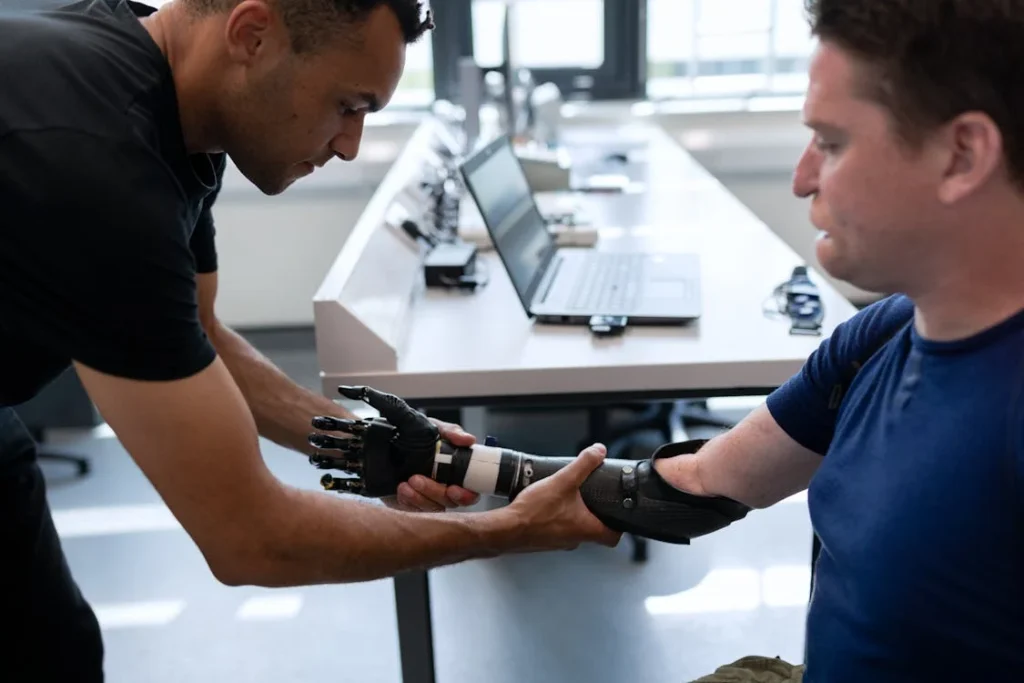
Breaking Barriers: Making Rehab Accessible to Everyone
We know something very important—rehab should never be a luxury. It should not depend on how much money someone has, or whether they live in a big city. Healing should be for everyone. That belief is at the core of everything we do at RoboBionics.
When we built our gamified rehab system, we made sure it worked anywhere. You don’t need a fancy hospital room. You don’t need high-end machines. All you need is a smartphone or tablet and one of our devices. That’s it. Whether you live in a busy metro like Mumbai or a small town in Assam, you can access this tool. You can start your recovery journey from the comfort of your home, without stress or long travel.
This is how we break barriers. We remove the need for expensive, foreign-made tech. We design for Indian families. We use local materials. And we price our solutions fairly—because no one should be priced out of progress.
With this approach, we’ve helped people across India take control of their rehab journey. We’ve partnered with clinics, hospitals, and rehabilitation centers so that this technology reaches those who need it most. And we keep improving it every day, based on real stories from real people.
The Emotional Side of Rehab (And How Games Help)
Physical rehab is visible. You can see a hand move, a muscle flex, a step taken. But what about what you can’t see? What about the moments when someone feels scared, angry, or hopeless?
That’s the emotional side of rehab. And it’s just as important as the physical.
People who lose a limb often go through grief. It’s like losing a part of yourself. Along with that grief comes anxiety—about the future, about what people will say, about what they can or can’t do anymore. It’s easy to feel alone.
But games have a way of breaking that loneliness.
In our gamified rehab experience, people don’t just see progress—they feel it. They see that their body is still strong. That their spirit is still willing. They start to believe in themselves again.
And when they share their scores, their wins, their “level ups,” with friends or family, something amazing happens. Rehab turns into a shared experience. People clap. They laugh. They join in. That support builds connection. And connection brings healing.
We’ve had parents who sit beside their children and cheer them on. Grandmothers who try the games just to see what it feels like. Husbands and wives who turn therapy into a bonding time. These moments are not just cute—they’re powerful. Because healing happens faster when you’re not alone.
From First Touch to Full Control
Let’s talk about what it’s like to start using the Grippy™ Bionic Hand or any of our mechanical hands or fingers.
For many people, the first time is overwhelming. You see this beautifully built device. You put it on. And then you wonder—how does this become part of me?
That’s where the gamified rehab app really shines.
It turns that “first touch” into an adventure. You begin by learning how your muscles send signals. The app shows you how squeezing your arm can move the fingers. It guides you gently, step by step. No pressure. Just discovery.
Then, as you grow more confident, the challenges grow too. You learn to grip softly. To grip hard. To move one finger at a time. These aren’t just skills—they’re superpowers. And every time you complete a task in the app, it feels like unlocking a new ability.
We’ve seen users go from not being able to hold a spoon to cooking their own meals. From struggling to zip a bag to tying their shoes. These aren’t small wins. These are life-changing victories. And the app helps make each one visible, meaningful, and exciting.
Hope That Fits in Your Pocket
What makes our gamified rehab so powerful is its simplicity. It’s not some bulky machine. It’s not a complicated system. It’s an app. On your phone. In your pocket. Ready to go wherever you go.
That means you can do your therapy at home, in the park, or even on a break at work. You’re not tied to a schedule. You’re not waiting for a clinic appointment. You’re in charge.
This kind of freedom matters. It builds trust. It makes people feel seen. And it helps create a daily habit. When something is easy to do, you do it. You stick with it. And little by little, those efforts add up to something huge.
We believe hope shouldn’t come in a hospital bag. It should be something you can carry with you. Something that reminds you, every day, “You’ve got this.”
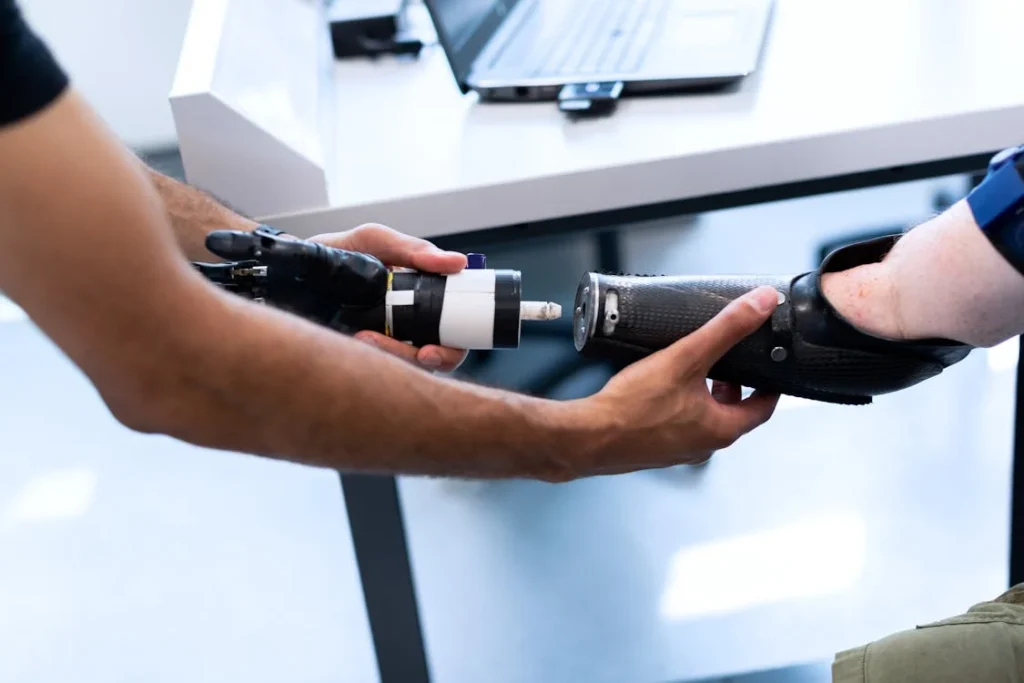
The Science Behind the Fun
You might be wondering—how does something that feels like a game actually help with real recovery? It’s a fair question. After all, serious challenges need serious solutions. But here’s the truth: this isn’t just fun for fun’s sake. This is fun backed by neuroscience, physical therapy principles, and real-world results.
When we play, our brain is in a state of high attention. It’s focused, alert, and ready to learn. That’s because games trigger reward pathways in the brain. Each time you succeed at a task—even a small one—your brain releases dopamine. This isn’t just a “feel-good” moment. Dopamine actually helps your brain remember what worked. It reinforces behavior. So if you’re doing a certain hand movement in a game and win a level, your brain says, “Let’s do that again!”
This is the same reason why people can sit for hours solving puzzles or completing quests. Their brain is learning through play. In rehabilitation, this is gold. Because instead of telling the brain to “try harder,” we’re telling it to “keep playing.” That small shift makes all the difference.
We also know that repetition is the key to recovery. Muscles need practice. Joints need to move. Signals between the brain and body need to be retrained. But repetition is hard when it’s boring. Most people can only handle a few minutes of dry exercise. But when it’s part of a game? They can go for much longer—without even noticing.
This is how we turn minutes into hours of quality therapy. Without strain. Without stress. Just smooth, joyful, productive movement.
Made for Real Life, Not Just a Lab
One of the big problems with many rehab tools is that they’re too clinical. They work in controlled environments, with perfect lighting, perfect chairs, perfect timing. But real life isn’t like that. Real life is messy. Noisy. Unpredictable. People get tired. They get interrupted. They forget things.
That’s why our gamified rehab system is built for the real world. You don’t need a therapist beside you all the time. You don’t need to memorize steps. You don’t need a high-speed connection or the latest phone model. It works on simple devices. It saves your progress. It adjusts based on how you’re feeling that day.
Maybe you had a tough night and your hand feels stiff. The app will recognize that and offer easier challenges. Maybe you’re feeling strong and want to push yourself. The app’s got you. It grows with you.
This makes it much more likely that people will stick with their therapy long-term. And long-term consistency? That’s where real transformation happens.
Stories That Inspire Us Every Day
At RoboBionics, we’re not just engineers and designers. We’re listeners. We listen to the people who use our tools. We hear their fears, their dreams, their victories. And these stories are the fuel behind everything we create.
There’s the boy from Pune who lost his arm in an accident. He was quiet, withdrawn, and didn’t want to try his prosthetic. Then we introduced him to the rehab game. The first time he saw the balloon lift when he moved his hand, he smiled. It was the first smile his parents had seen in weeks. Now, he finishes levels faster than anyone in his rehab group.
There’s the woman in her 60s from Bihar. She never thought she’d be able to cook again after a stroke affected her hand. Today, thanks to daily practice with the app, she peels vegetables and stirs curry like she used to. “I didn’t think games were for someone my age,” she said. “But they brought my hands back.”
These aren’t just touching stories. They’re proof. Proof that when we design with heart, listen with care, and build with purpose, lives change.
The Future of Rehab is Playful—and Powerful
We’ve only just begun. The world of gamified rehabilitation is growing, and we’re leading the way in India. Our goal is to keep improving the experience—adding new challenges, more languages, smarter feedback, and even community features so people can cheer each other on.
We’re exploring ways to connect families through the app, so parents and children can rehab together. We’re adding adaptive tech for people with multiple challenges. And we’re training clinics and therapists across India to use the system in their own care centers.
This isn’t a side project. It’s the future.
We believe that the best healing happens when people feel joy. When they laugh. When they try again. When they forget, just for a moment, that they’re “in therapy” and remember that they’re alive, they’re capable, and they’re growing stronger every day.
That’s what gamified rehab is really about. It’s about making recovery feel less like work—and more like hope.

From Isolation to Connection: How Gamified Rehab Builds Community
Rehab is Personal, But It Doesn’t Have to Be Lonely
Recovering from limb loss or injury often brings with it something few people talk about—loneliness. It’s not just the physical pain. It’s the quiet moments when you look around and feel different. When friends don’t fully understand. When even family, despite their love, can’t quite relate. It’s hard to explain the feeling of reaching for a glass and missing, or hearing laughter in a group and wondering if they notice your hand.
That feeling of being alone can slow down healing. Because recovery isn’t just about muscles—it’s about mindset. And the mind heals faster when it feels seen, understood, and supported.
That’s why our gamified rehab system is built not just to help individuals get better—but to help them connect. To make them feel like they’re part of something bigger. Something joyful.
Turning Therapy Into Shared Celebration
One of the most powerful things about games is how they bring people together. Think about any game you’ve played with others—board games, video games, even mobile games. There’s always laughter. Teasing. Competition. And most importantly, togetherness.
We bring that same spirit into our rehab experience.
Users can now share their progress within their family or support network. The app lets you celebrate when you reach new milestones. Maybe you moved your fingers for the first time. Maybe you beat your best grip score. These wins matter. And when your loved ones can see them too, they become part of your healing journey.
We’ve seen fathers high-five their kids after a successful level. Cousins join in to see who can complete a challenge faster. Even entire families taking turns using the app, cheering each other on. Suddenly, therapy isn’t just your responsibility—it’s something everyone is rooting for.
This emotional support can’t be measured in charts. But its effect? Tremendous.
Peer Motivation: Stronger Together
Something magical happens when people going through similar journeys meet each other. They swap stories. They laugh about things only they would understand. They share little tricks, like which muscle moves the thumb best, or how to eat with a prosthetic fork.
This kind of peer bonding builds strength in ways that no device can.
Our app includes a feature where users can view anonymous progress data from others on similar paths. You can see how someone else with a Grippy™ Hand is doing. You can choose to follow their journey, or even send a small cheer emoji when they complete a challenge. No pressure. Just presence. Just knowing, “I’m not the only one.”
And if you want more, our partner centers run small group sessions where users practice together, in real time. They train. They joke. They encourage. It’s not about competition—it’s about connection.
These mini-communities grow naturally. Some even stay in touch outside the sessions, becoming friends who check in on each other, long after rehab is done.
Healing is Faster When You Feel Seen
There’s an emotional shift that happens when someone says, “I get what you’re going through.” It takes away the weight. You don’t have to explain. You don’t have to pretend. You can just be—and heal.
That’s why we’re building more community features into our app. Things like story-sharing spaces where users can talk about their recovery, ask questions, or just say how their day went. Simple, private, and powerful.
Even reading someone else’s post—someone saying, “I had a bad day but I still did my 15 minutes”—can make you want to try too. That’s the power of shared struggle. It becomes shared strength.
In the future, we plan to launch live challenges where people across India can join a “rehab marathon.” Everyone logs in on the same day. Everyone does their sessions. And at the end, there’s a celebration, maybe even prizes. Not for being the best. But for showing up.
That’s what counts.
Your Journey. Our Family.
At RoboBionics, we don’t just sell products. We walk with people. We call our users by name. We remember their stories. We celebrate their wins. And when they stumble, we’re there to remind them: You’re not alone.
The gamified rehab experience is just one way we bring this to life. It’s not perfect yet. But it’s growing. With every user, we learn something new. With every story, we build something better.
Because in the end, healing isn’t just about hands and muscles. It’s about hope. It’s about connection. And it’s about the deep, unshakeable belief that together, we are stronger.
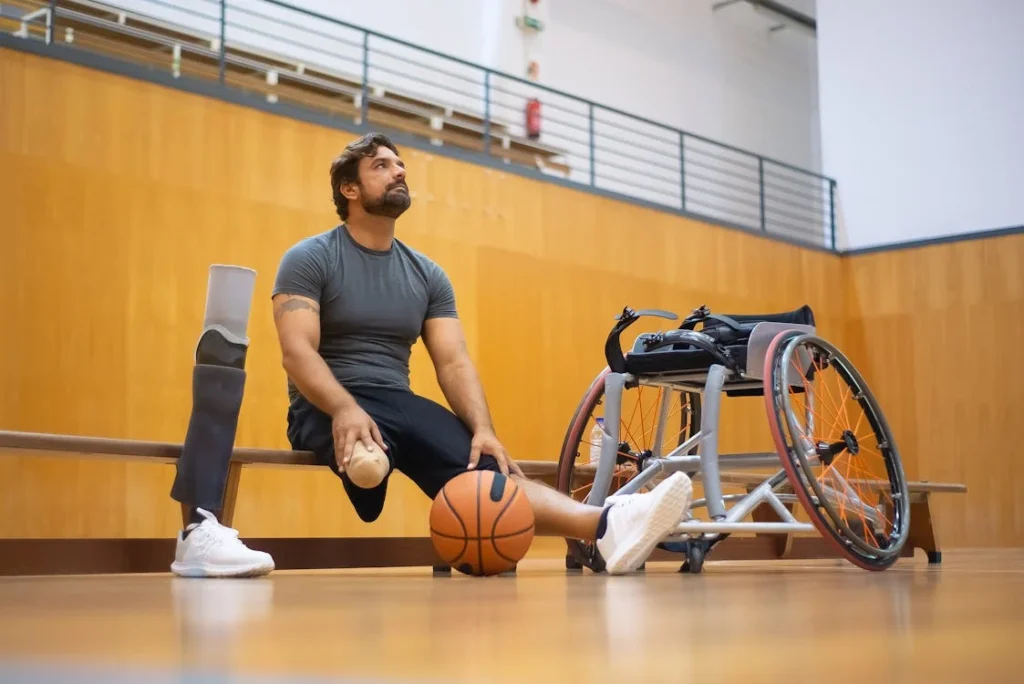
Amplifying Recovery: How the BrawnBand™ Supercharges Gamified Rehab
Rewiring the Body, One Pulse at a Time
Sometimes, after a limb loss or long period of inactivity, the muscles forget how to work. It’s not that they’re broken—it’s that they’re quiet. Silent. Waiting for a spark. That’s where the BrawnBand™ comes in. This small, lightweight device isn’t loud or flashy. But what it does? It’s powerful.
The BrawnBand™ sends gentle electrical pulses into specific muscles. These signals are just strong enough to activate the muscle fibers, encouraging them to contract and move. Over time, these small activations help reawaken the body’s natural connection between brain and muscle.
Think of it like tuning an old radio. The signal is fuzzy at first, but with the right adjustment, the music starts to play again.
Now imagine pairing that muscle “tuning” with a game—where each time your muscle fires, you see a balloon rise or a bird fly. That’s what happens when we combine BrawnBand™ with our gamified rehab system.
From Passive Therapy to Active Play
Muscle stimulation by itself is useful. It gets the blood flowing. It keeps the muscles from weakening. But when it becomes part of an interactive game, everything changes. Suddenly, it’s not just your body responding—it’s your mind joining in.
Let’s say someone is using the BrawnBand™ to stimulate their forearm. As the device pulses, their fingers move slightly. With our system, that same movement is picked up by the app. The screen shows a rocket lifting off. A spark. A small success. And the brain connects the dots: “When I try to move, something happens.”
This kind of feedback loop is gold in early recovery. It teaches the brain and body to work together again. And it builds confidence quickly—because people stop asking, “Will I ever move again?” and start thinking, “Wow, I can move.”
Training the Brain Through Biofeedback
Our rehab system isn’t just visual fun. It also includes real-time biofeedback—information that tells users how their muscles are behaving. This is where the BrawnBand™ plays a key role.
While the device stimulates the muscles, the app watches how they respond. Are the contractions strong enough? Are the muscles firing in sync? Are both arms showing balanced effort?
This isn’t data for doctors only. It’s shared in easy, simple visuals for the user. You can see your muscles wake up. You can track how they’re growing stronger. That knowledge is powerful. Because it turns mystery into mastery.
People stop guessing if they’re improving. They know.
Smoothing the Learning Curve for New Prosthetic Users
Learning to use a bionic or mechanical hand isn’t just about wearing it. It’s about knowing how to control it. That control doesn’t come from the device—it comes from your own body.
And that’s where many new users struggle. Their muscles are weak. Their signals are mixed. They get frustrated.
With the BrawnBand™ helping guide those first signals—and the gamified rehab app turning those signals into fun, visual feedback—the learning curve becomes smoother. Less confusion. More control. And faster adaptation.
Users move from just wearing the Grippy™ Hand to owning it—making it truly part of their body.
Home-Based Therapy, Backed by Science
One of the best things about the BrawnBand™ is that it’s made for home use. You don’t need wires everywhere. You don’t need to be in a hospital. It straps on easily. It connects quickly. And with the app, you get a full rehab session without ever leaving your home.
This is a game-changer for people in remote areas. Or for those who can’t travel easily. Now, with just a BrawnBand™, a smartphone, and our app, they can do muscle therapy and gamified rehab at once.
This is what we mean when we talk about accessibility with dignity. Affordable. Practical. And rooted in real science.
The Future Is Smart, Connected Recovery
We’re continuing to build more connections between our devices. Soon, the BrawnBand™, Grippy™ Hand, and gamified app will work in complete sync. You’ll be able to set a routine. Get reminders. Adjust difficulty. Track improvements across your entire system. And all of it will live in your pocket.
It’s not just about healing faster. It’s about healing smarter. And more joyfully.
Because when the body moves, the heart follows. And when movement is fun? People don’t just recover. They thrive.
Conclusion
At RoboBionics, we believe that rehab should never feel like punishment—it should feel like progress. Like possibility. Like play. Our gamified rehab system, paired with smart tools like the Grippy™ Hand and BrawnBand™, turns tough recovery days into something you actually look forward to.
It’s not just about games. It’s about giving people control, joy, and confidence during one of the hardest chapters of their lives. When rehab feels like leveling up, people don’t quit. They push forward. They heal faster. And they rediscover pride in every move.
This is more than innovation—it’s human care, built with love and science.
So if you’re ready to turn your recovery journey into something powerful, joyful, and life-changing…
Book your free demo today at robobionics.in/bookdemo
Let’s level up, together.



